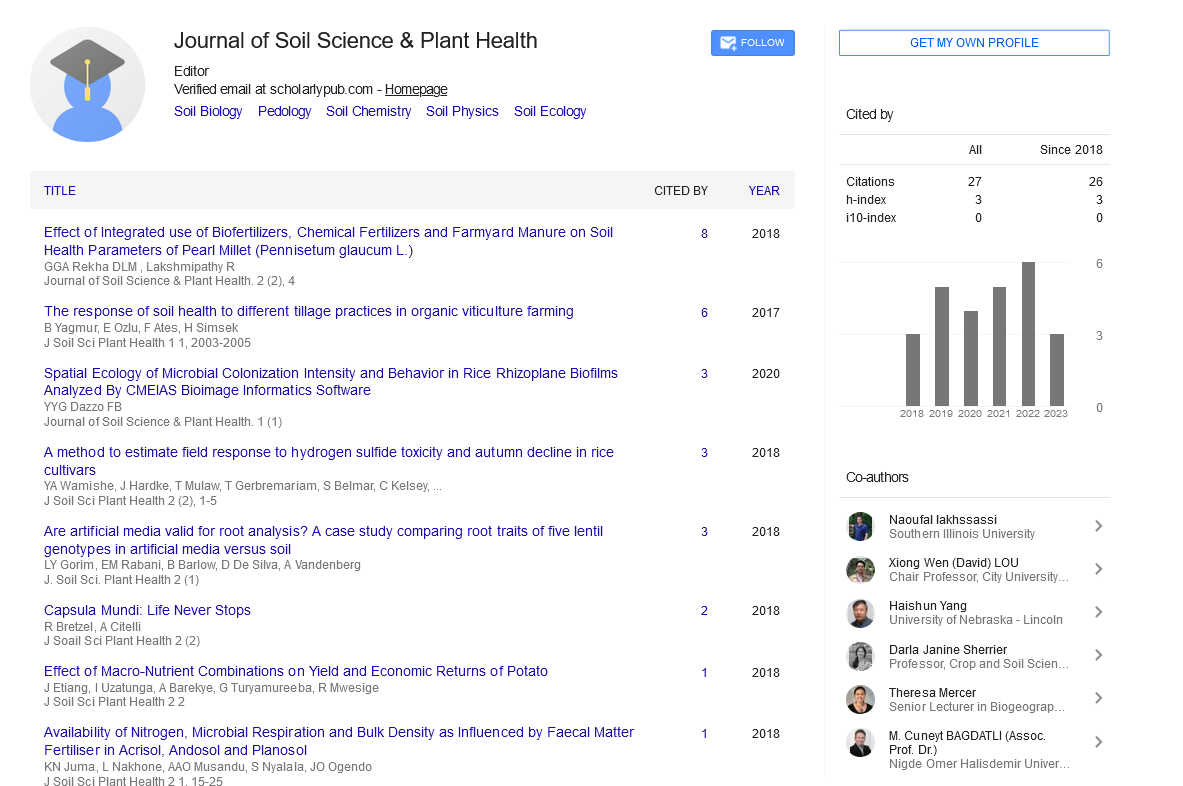Editorial, J Soil Sci Plant Health Vol: 5 Issue: 12
Plant Health and Its Effects on Food Safety
Maureen Lichtveld*
Department of Public Health, University of Pittsburgh, Pittsburgh, PA, USA
*Corresponding author: Dr. Maureen Lichtveld, Department of Public Health, University of Pittsburgh, Pittsburgh, PA, USA, Email: maureen@yahoo.com
Received date: December 02, 2021; Accepted date: December 16, 2021; Published Date: December 23, 2021
Citation: Maureen Lichtveld (2021) Plant Health and Its Effects on Food Safety. J Soil Sci Plant Health 5:12.
Abstract
Although healthy plants are vital to human and animal health, plant health is often overlooked in the One Health literature. Plants provide over 80% of the food consumed by humans and are the primary source of nutrition for livestock. However, plant diseases and pests often threaten the availability and safety of plants for human and animal consumption. Global yield losses of important staple crops can range up to 30% and hundreds of billions of dollars in lost food production. To demonstrate the complex interrelationships between plants and public health, we present four case studies on plant health issues directly tied to food safety and/or security, and how a One Health approach influences the perception and mitigation of these issues. Plant pathogens affect food availability and consequently food security through reductions in yield and plant mortality as shown through the first case study of banana Xanthomonas wilt in East and Central Africa.
Keywords: Plant Health, Food Safety, Plant Diseases
Description
Although healthy plants are vital to human and animal health, plant health is often overlooked in the One Health literature. Plants provide over 80% of the food consumed by humans and are the primary source of nutrition for livestock. However, plant diseases and pests often threaten the availability and safety of plants for human and animal consumption. Global yield losses of important staple crops can range up to 30% and hundreds of billions of dollars in lost food production. To demonstrate the complex interrelationships between plants and public health, we present four case studies on plant health issues directly tied to food safety and/or security, and how a One Health approach influences the perception and mitigation of these issues. Plant pathogens affect food availability and consequently food security through reductions in yield and plant mortality as shown through the first case study of banana Xanthomonas wilt in East and Central Africa.
Plant Diseases and Pests Influence
Plants may also serve as vectors of human pathogens as seen in case study 3, with an example of Escherichia coli (E. coli) contamination of lettuce in North America. Finally, case study 4 focuses on the use of pesticides in Suriname, a complex issue intimately tied to food security though protection of crops from diseases and pests, while also a food safety issue through misuse. These cases from around the world in low to high income countries point to the need for interdisciplinary teams to solve complex plant health problems. Through these case studies, we examine challenges and opportunities moving forward for mitigating negative public health consequences and ensuring health equity. Advances in surveillance technology and functional and streamlined workflow, from data collection, analyses, risk assessment, reporting, and information sharing are needed to improve the response to emergence and spread of plant-related pathogens and pests. Our case studies point to the importance of collaboration in responses to plant health issues that may become public health emergencies and the value of the One Health approach in ensuring food safety and food security for the global population.
Although plant health is currently part of the definition of One Health, plants have typically not been well integrated into discussions of One Health approaches. However, plant health is vital to sustain human and animal health and a critical component of the complex interactions among the environment, humans, and animals. Plant diseases and pests influence the availability and safety of plants for human and animal consumption, reduce crop yield and detrimentally affect quality. Measures to prevent or treat diseases, including application of pesticides, may adversely impact the health of agricultural workers and consumers, as well as drive the development of antimicrobial and antifungal resistance in pathogens. In addition, food plants may serve as carriers of human pathogens and harmful microbial-based toxins. For example, foodborne illnesses pose a serious global burden on human health, reportedly affecting 600 million people or 33 million Disability Adjusted Life Years (DALYs) in a single year. The emergence of new variants of pathogens and pests, as well as the expansion of the geographic range of known ones, can cause significant disruption in food production and pose a burden on the global economy. Global yield losses of important staple crops to pathogens and pests can range up to 30% with estimated costs to the global economy due to lost food production in the hundreds of billions of dollars.
 Spanish
Spanish  Chinese
Chinese  Russian
Russian  German
German  French
French  Japanese
Japanese  Portuguese
Portuguese  Hindi
Hindi 